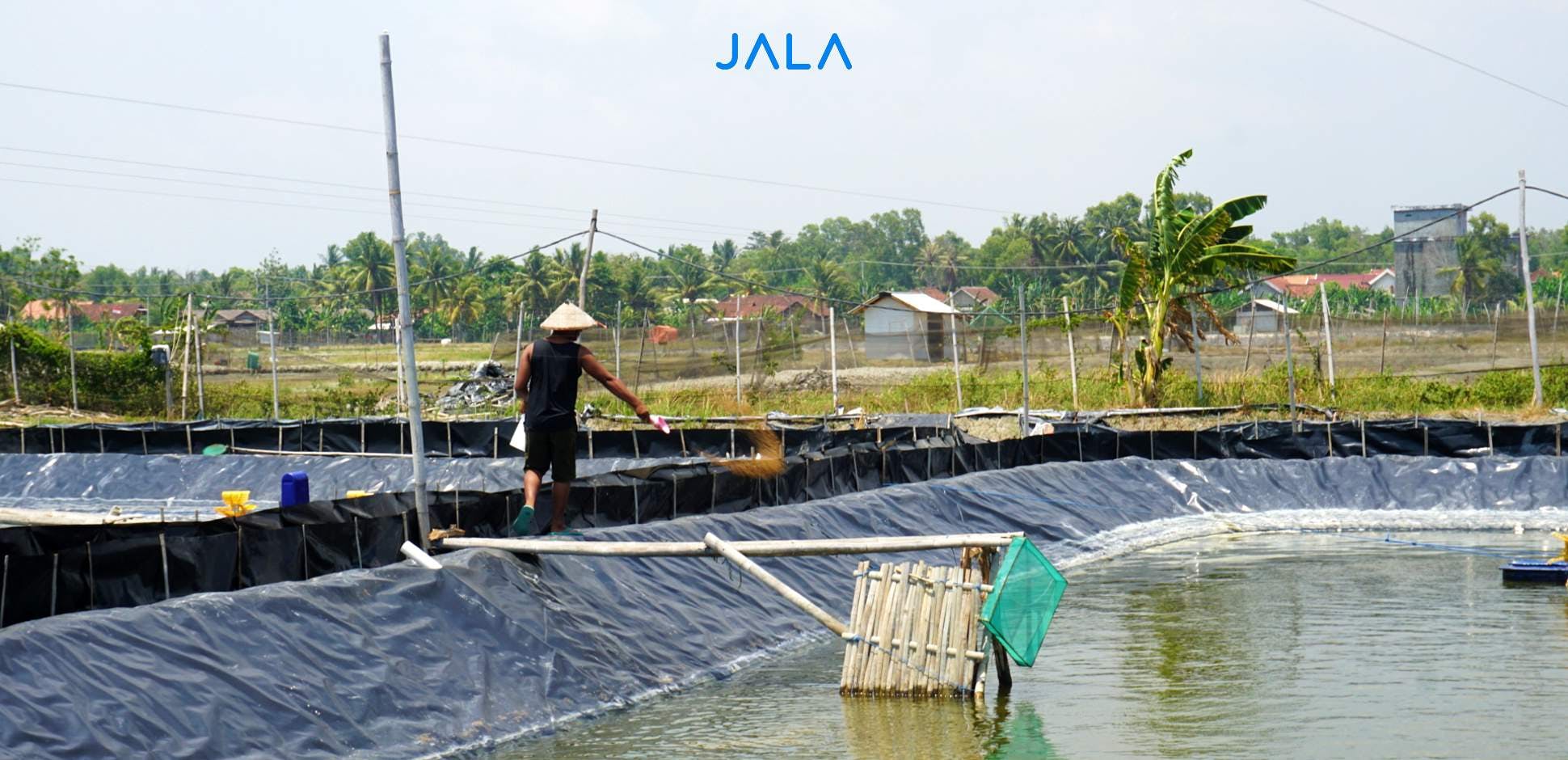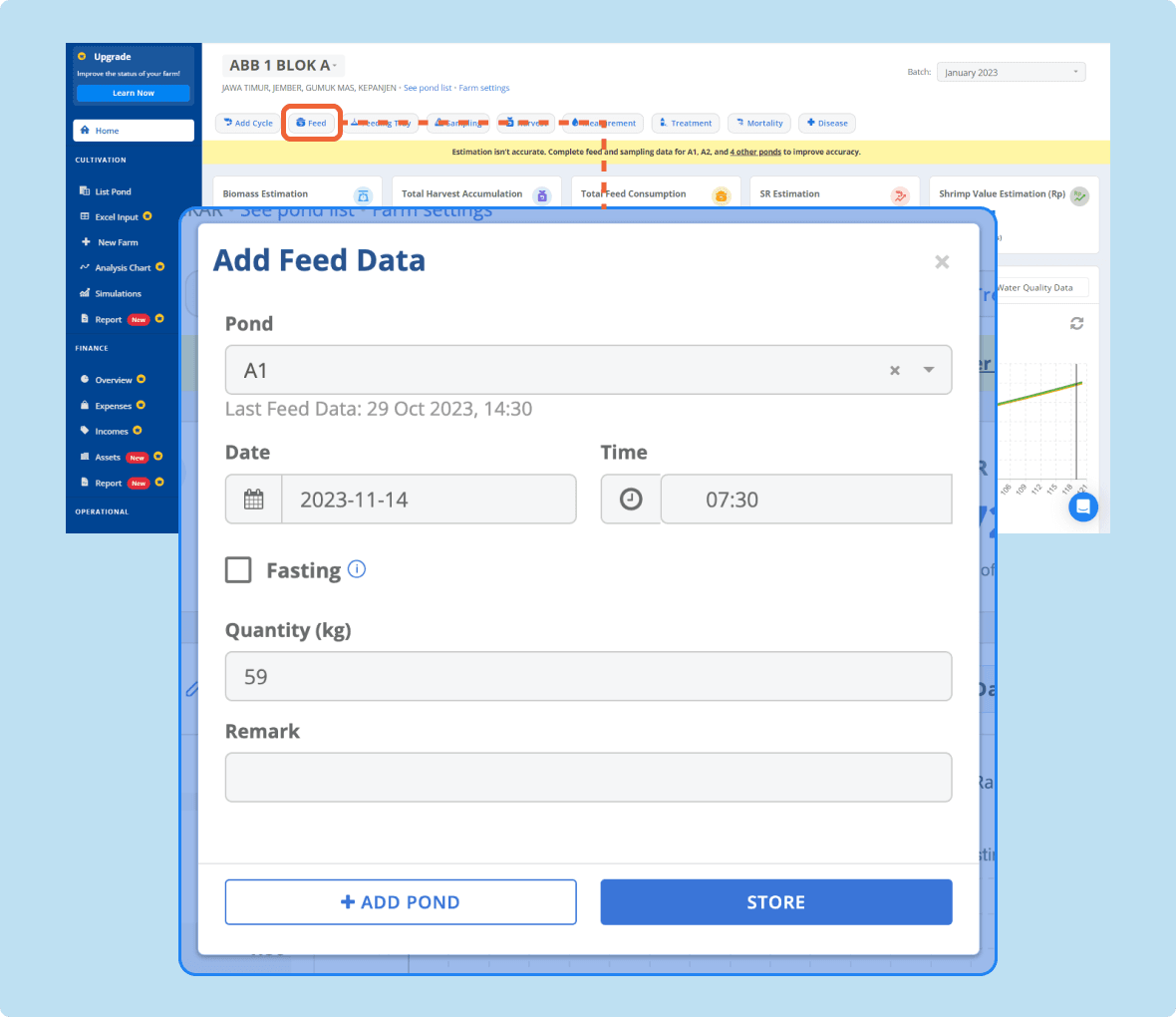
Feed is the largest component in shrimp farming costs, which approximately accounts for 50-70% of the total costs in each cycle. Farmers may find it difficult to overcome the high expense, particularly if they haven't implemented the optimum feeding strategies. Farmers often face financial challenges when feed expenses surpass their budget.
On the one hand, feed is indeed one of the most crucial components of cultivation since it enhances shrimp growth, particularly in semi-intensive, intensive and super-intensive farms that mostly rely on artificial feed. However, shrimp do not actually consume all the feed given. They only consume 85% of the feed, while the remaining 15% goes to the water column.
Considering the large costs and the behavior of shrimp in ponds, farmers need to find efficient ways to feed their shrimp. Efficiency will help farmers prevent budget overruns and avoid losses.
Tips to improve feeding efficiency
Improving feeding efficiency does not occur instantly. It requires effort and perseverance to implement the right efficiency measures. Below are some tips that farmers can implement to improve feeding efficiency:
Use high quality feed
High quality feed gives shrimp the nutrients they require to grow and develop optimally. The physical characteristics of the feed and its stability in water are the important quality indicators. Make sure the feed does not clump and the length and diameter of the feed are similar. Feed is also considered decent if it remains stable for 2-3 hours in water, since the shrimp will have no trouble digesting it.
Adjust the feeding management
Adjust feeding management regularly. By doing so, feed efficiency remains optimal and the Feed Conversion Ratio (FCR) stays within the ideal range. Adjust it based on the needs and age of the shrimp, for example, crumble feed should be given when the shrimp reach Day of Culture (DoC) 16-45 days. Farmers can also calculate the amount of feed needed using the feed index method when the DoC of the shrimp is 30 days until harvest time. Feed index is the finding of the amount of feed given to shrimp with a percentage of the index.
When feeding, consider the amount of feed and the feeding schedule. Ensure the feed is spread evenly in the pond. By doing so, the shrimp can get enough feed and prevent feed buildup in one spot in the pond, which will affect water quality.
Control water quality
Shrimp growth can be slowed by poor water quality, which also lowers feeding efficiency. According to Krisiyanto, et al. (2021), leftover feed contains organic material that causes ammonia to arise and decreases water quality.
Regular water quality control is therefore essential. It is best to measure water quality parameters, such as pH, temperature, salinity and DO, with an accurate measurement device daily.
The importance of feeding tray in shrimp farming
Improving feed efficiency goes hand in hand with regular monitoring of shrimp appetite. This monitoring can be done through feeding trays. With feeding trays, farmers can track the growth of shrimp over time and see whether the feed given has been consumed by the shrimp. Monitoring through feeding trays is done every day, 2-3 hours after feeding.
In addition to being used to monitor shrimp appetite, feeding trays are also used to monitor shrimp health. From the shrimp samples in the feeding tray, farmers can have a better understanding of the shrimp's physical appearance. Farmers can send their shrimp sample straight to the laboratory if they notice any unusual signs, including black spots on the shrimp’s body.
Use JALA App to record feeding data
One more thing that should not be missed is recording feed data. This will help farmers in managing feed and support efficient feeding strategies.
To make recording easier, JALA helps farmers through JALA App. In JALA App, farmers can record the daily amount of feed given in each pond. From the recorded data collection, farmers can get projections of cultivation conditions in one cycle.

Let's increase feeding efficiency to make cultivation run sustainably and productively. Start with a small step: recording feeding data in JALA App. Download now on Google Play Store or App Store!
References
High Quality Feed for Shrimp Growth | JALA
Krisiyanto, et al. (2021). Komunitas Fitoplankton Dan Kualitas Air Budidaya Udang Vannamei di Marine Science Techno Park Jepara. Journal of Marine Research, 10(4), 501-507.





